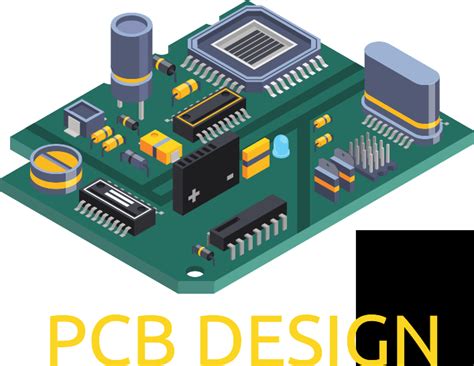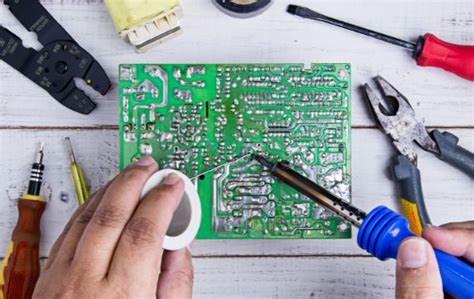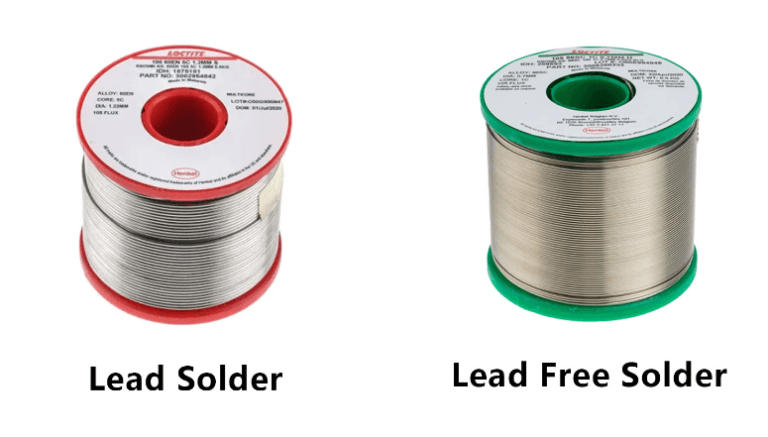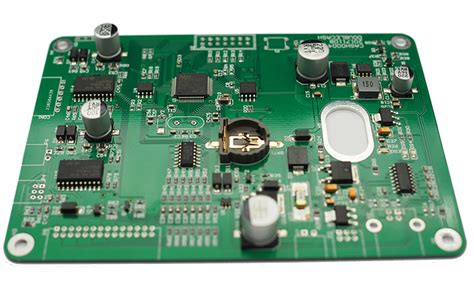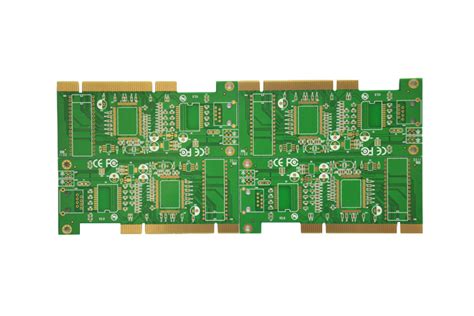PCB Design Ltd: Cutting-Edge Strategies for Circuit Board Optimization
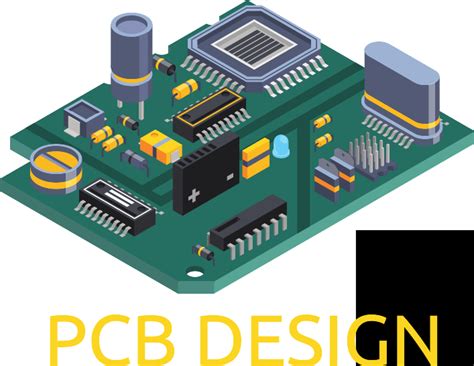
Key Takeaways
Effective circuit board optimization requires balancing technical precision with practical manufacturing considerations. PCB assembly processes play a pivotal role in ensuring design integrity, particularly when integrating high-speed signal paths or power distribution networks. Advanced simulation tools enable engineers to preemptively address signal integrity challenges, such as crosstalk and impedance mismatches, which are critical in aerospace and consumer electronics applications.
Tip: Early collaboration between design and PCBA teams reduces prototyping cycles by aligning layout constraints with manufacturing capabilities.
Thermal management strategies, such as optimized copper pours and strategic via placement, mitigate overheating risks in compact multi-layer PCB designs. For cost-sensitive projects, material selection directly impacts performance and scalability—high-frequency laminates may suit aerospace-grade boards, while FR-4 alternatives balance affordability and reliability for consumer devices.
Key considerations for cost-effective PCB assembly include panelization efficiency and component placement optimization, which minimize waste and streamline production. In multi-layer configurations, adherence to EMI/EMC compliance ensures designs meet stringent industry standards without requiring post-production modifications. By leveraging automated routing algorithms and modular design principles, engineers can accelerate development timelines while maintaining robustness across temperature cycles and mechanical stress conditions.

PCB Design Ltd’s Signal Integrity Solutions
Building on decades of expertise in high-frequency circuit design, PCB Design Ltd addresses signal integrity challenges through a systematic approach that combines advanced simulation tools with precision manufacturing practices. At the core of their methodology lies the integration of impedance matching protocols and crosstalk minimization techniques, which are critical for maintaining signal clarity in high-speed PCBA designs.
For complex multi-layer boards, the company employs 3D electromagnetic field solvers to model signal paths, identifying potential interference hotspots before prototyping. This preemptive analysis reduces iterative PCB assembly cycles by up to 40%, particularly in aerospace applications where reliability is non-negotiable. A comparative analysis of their signal optimization strategies reveals key advantages:
| Technique | Key Features | Application Scope |
|---|---|---|
| Differential Pair Routing | Minimizes EMI through balanced traces | High-speed data transmission |
| Ground Plane Optimization | Reduces return path discontinuities | RF and microwave systems |
| Via Stub Elimination | Mitigates signal reflection | Multi-layer PCBA designs |
The firm’s adaptive termination methods further enhance performance in mixed-signal environments, ensuring compatibility between analog and digital components. By collaborating with PCB assembly partners specializing in low-loss materials like Rogers 4350B, they achieve consistent impedance control (±5% tolerance) across production batches.
Transitioning seamlessly into thermal management considerations, PCB Design Ltd’s signal integrity solutions inherently account for heat dissipation patterns. This dual-focused approach ensures that optimized trace layouts not only preserve signal quality but also align with broader thermal performance objectives—a critical linkage for next-gen consumer electronics and aerospace systems alike.

Thermal Management in Modern PCB Layouts
Effective thermal management has become a cornerstone of reliable PCB assembly, particularly as modern electronic devices demand higher power densities and miniaturized form factors. Engineers at PCB Design Ltd employ a multi-faceted approach to dissipate heat efficiently, balancing performance with manufacturability. A critical strategy involves optimizing component placement to isolate heat-sensitive elements from high-power devices, such as voltage regulators or RF modules. This is complemented by the integration of thermal vias—plated holes that transfer heat from surface layers to internal copper planes or heatsinks—ensuring uniform temperature distribution across the board.
In PCBA (Printed Circuit Board Assembly) workflows, material selection plays a pivotal role. High-thermal-conductivity substrates, like metal-core or ceramic-filled laminates, are prioritized for applications requiring rapid heat dissipation, such as LED lighting or automotive control systems. For cost-sensitive consumer electronics, designers often opt for strategic copper pours combined with solder mask openings to enhance convective cooling without escalating material costs. Advanced simulation tools further refine these layouts, predicting hotspots during early design phases to prevent performance degradation or premature failure.
Aerospace and industrial applications introduce additional complexities, where thermal cycling and extreme operating conditions necessitate robust solutions. Here, PCB Design Ltd leverages embedded heatsinks and conformal coatings to protect against environmental stressors while maintaining thermal efficiency. The interplay between pcb assembly techniques and thermal design rules is particularly evident in multi-layer boards, where alternating signal and power planes are carefully arranged to minimize impedance while maximizing heat transfer.
Emerging trends, such as the integration of thermally conductive adhesives in PCBA processes, are reshaping traditional approaches. These materials not only secure components but also act as secondary heat pathways, reducing reliance on bulky external cooling systems. However, designers must balance these innovations with DFM (Design for Manufacturability) principles to avoid compromising production yields. By aligning thermal management strategies with cost-effective circuit board design methodologies, PCB Design Ltd ensures optimal performance across diverse industries—from wearable tech to satellite communications—without sacrificing reliability or scalability.
Cost-Effective Circuit Board Design Strategies
Achieving cost efficiency in PCB design requires a strategic balance between performance requirements and budget constraints. A foundational approach involves optimizing component placement to minimize trace lengths, reducing material waste while maintaining signal integrity. By leveraging advanced pcb assembly techniques such as automated component clustering, designers can decrease production time and labor costs without compromising reliability.
Material selection plays a pivotal role in cost management. Opting for standardized substrate materials like FR-4 instead of specialty laminates can yield savings of 15–25% in bulk production. However, this must align with thermal performance thresholds to avoid compromising long-term durability. For high-volume projects, integrating pcba (printed circuit board assembly) workflows with design-for-manufacturability (DFM) principles ensures seamless transitions from prototyping to mass production, eliminating costly redesign cycles.
Panelization strategies further enhance cost efficiency. Maximizing board utilization within manufacturing panels reduces raw material waste, with advanced nesting algorithms achieving up to 92% material efficiency. Implementing unified testing protocols across pcb assembly stages—such as combining in-circuit testing (ICT) with boundary scan—reduces post-production quality control expenses by 30–40%.
For consumer electronics and industrial applications, modular design architectures allow reusable circuit blocks across product lines, slashing development costs. Pairing this with value engineering—prioritizing essential functionalities over redundant features—ensures competitive pricing without sacrificing core performance. Additionally, collaborating with pcba partners early in the design phase enables component sourcing optimization, leveraging economies of scale for high-demand passive components.
Transitioning to these strategies requires meticulous simulation-driven validation. Tools like thermal modeling and impedance analysis preemptively identify cost-intensive redesign risks, aligning with the next section’s focus on aerospace-grade optimization techniques. By embedding cost-conscious practices at every design iteration, engineers unlock sustainable savings while maintaining compliance with industry standards.
Aerospace-Grade PCB Optimization Techniques
Aerospace applications demand unparalleled reliability in PCB assembly, where extreme environmental conditions and mission-critical performance intersect. To meet these rigorous standards, engineers prioritize signal integrity preservation through controlled impedance routing and advanced EMI shielding techniques. Multi-layer stackups with embedded capacitance layers are increasingly adopted to minimize noise in high-frequency circuits, particularly in radar and communication systems.
Thermal management takes center stage in aerospace PCBA designs, where temperature fluctuations from -55°C to 125°C require specialized material selection. Polyimide-based substrates and ceramic-filled laminates provide exceptional thermal stability, while strategic placement of thermal vias beneath power components prevents localized overheating. Recent advancements in copper coin integration enable direct heat transfer from high-power ICs to chassis mounts, a technique proven effective in satellite power distribution modules.
The balance between weight reduction and durability drives innovation in aerospace-grade PCB assembly processes. Selective gold plating on edge connectors combined with immersion silver finishes ensures corrosion resistance without compromising high-speed signal paths. Manufacturers are leveraging laser-drilled microvias in 18-layer designs to achieve 40% weight savings compared to traditional through-hole architectures, particularly in avionics control systems.
For mission-critical PCBA implementations, designers employ redundant circuit topologies and fault-tolerant routing strategies. Cross-stub elimination techniques and matched-length differential pairs maintain timing precision in flight navigation processors. Rigorous testing protocols, including thermal cycling (-65°C to 150°C) and vibration simulations exceeding 15G forces, validate design resilience before spacecraft integration.
Cost optimization in aerospace projects is achieved through panelization efficiency and standardized component footprints, allowing shared PCB assembly workflows across multiple satellite subsystems. The adoption of modular design principles enables rapid upgrades for phased array antennas, while maintaining compliance with MIL-PRF-31032 and IPC-6012 Class 3 specifications. Emerging techniques like 3D-printed conformal shielding are showing promise for next-generation radar PCBs, potentially reducing post-assembly processing steps by 25%.
Consumer Electronics PCB Cost-Reduction Methods
Balancing performance and affordability remains a critical challenge in consumer electronics PCB assembly. Manufacturers increasingly adopt value engineering principles to optimize designs without compromising functionality. One foundational strategy involves refining component placement to minimize trace lengths, which reduces material usage and improves signal integrity in PCBA workflows. By leveraging surface-mount technology (SMT) for smaller components, designers can achieve higher component density while lowering production waste.
A key focus area is design for manufacturability (DFM), where early collaboration between engineering and PCB assembly teams identifies cost drivers. For instance, standardizing hole sizes and avoiding non-standard via configurations can reduce drill bit changes during fabrication. Additionally, consolidating layers in multi-board systems through high-density interconnect (HDI) layouts lowers raw material expenses—a tactic particularly effective for compact devices like wearables or IoT sensors.
Material selection plays a pivotal role in cost optimization. While high-frequency substrates may be necessary for RF modules, FR-4 epoxy remains the cost-efficient backbone for most consumer applications. Advanced simulation tools enable precise copper weight adjustments, eliminating over-engineering in power distribution networks. Thermal management strategies, such as optimizing solder mask openings for heat dissipation, further reduce the need for supplemental cooling components in final PCBA integration.
To mitigate post-production costs, manufacturers are implementing automated optical inspection (AOI) protocols during PCB assembly to catch defects before functional testing. This proactive approach minimizes rework rates—a significant expense driver in high-volume orders. Furthermore, strategic panelization designs maximize substrate utilization, often achieving 85–90% material efficiency in mass production runs.
By integrating these methodologies, PCB Design Ltd has enabled clients to achieve 12–18% cost reductions in consumer electronics projects while maintaining compliance with international reliability standards. The shift toward modular designs also allows for component reuse across product lines, creating long-term savings that compound with each iteration of PCBA development.
Advanced PCB Material Selection Strategies
Material selection forms the cornerstone of high-performance PCB assembly, influencing everything from signal integrity to long-term reliability. Engineers at PCB Design Ltd prioritize dielectric constant (Dk) and loss tangent (Df) when evaluating substrates, as these parameters directly affect high-frequency signal behavior in aerospace and consumer electronics applications. For instance, polyimide-based laminates excel in flexible circuits due to their thermal stability, while low-Dk FR-4 variants remain cost-effective for standard PCBA projects.
The interplay between thermal management and material properties demands careful analysis. In power-dense designs, aluminum-clad substrates or ceramic-filled composites dissipate heat 40% more efficiently than traditional materials, reducing hotspots in multi-layer PCB designs. However, these advanced materials require adjustments in fabrication processes—a balance PCB Design Ltd achieves through iterative prototyping.
Emerging materials like liquid crystal polymer (LCP) are gaining traction for 5G-enabled devices, offering <1% moisture absorption rates compared to standard FR-4’s 3-4%. This characteristic proves critical in humidity-sensitive environments while maintaining stable impedance control. For cost-effective solutions, hybrid stackups combining high-frequency Rogers materials with standard FR-4 layers demonstrate how strategic material allocation can optimize performance without exceeding budget constraints.
In high-reliability sectors, PCB assembly teams prioritize halogen-free laminates to meet RoHS compliance, while military-grade applications often specify Isola 370HR for its proven performance across -55°C to +125°C operational ranges. The selection process invariably involves trade-off analysis—weighing factors like CTE (Coefficient of Thermal Expansion) matching against manufacturing lead times and PCBA compatibility.
Recent advancements in nanotechnology-enhanced substrates present new opportunities, with graphene-doped materials showing 15% improved thermal conductivity in early trials. As material science evolves, PCB Design Ltd maintains rigorous testing protocols to validate new options against MIL-PRF-31032 and IPC-6012 standards, ensuring every material choice aligns with application-specific electrical, mechanical, and environmental requirements.
Multi-Layer PCB Design Best Practices
Effective multi-layer PCB design requires meticulous planning to balance performance, reliability, and manufacturability. A well-optimized stackup configuration forms the foundation, where alternating signal, power, and ground layers minimize electromagnetic interference (EMI) and ensure stable signal propagation. For high-speed applications, designers prioritize impedance control by selecting materials with consistent dielectric constants and maintaining precise trace widths.
Thermal management becomes critical in densely packed layouts. Integrating thermal vias near high-power components, such as processors or voltage regulators, helps dissipate heat efficiently. Pairing this with copper pours on inner layers creates a conductive pathway to prevent localized overheating, which is especially vital for PCB assembly processes involving reflow soldering.
To reduce costs without compromising quality, consider hybrid material stacks. Combining standard FR-4 substrates with specialized high-frequency laminates in strategic layers optimizes performance for mixed-signal designs. Additionally, adhering to Design for Manufacturability (DFM) guidelines—such as avoiding acute angles in traces and ensuring adequate spacing for PCBA tooling—streamlines production and minimizes defects.
Aerospace and consumer electronics applications demand rigorous testing. Implementing cross-talk analysis and signal integrity simulations during the design phase identifies potential issues early, reducing post-production revisions. For instance, differential pair routing with controlled spacing ensures minimal noise in RF circuits, while blind/buried vias in multi-layer PCBs save space without sacrificing reliability.
As layer counts increase, collaboration between design and PCB assembly teams becomes essential. Clear documentation of layer-specific requirements—such as solder mask tolerances or surface finishes—ensures seamless transitions from prototyping to mass production. By integrating these strategies, engineers achieve robust designs that meet both technical and economic objectives across industries.
Future Trends in Circuit Board Thermal Control
As electronic devices shrink in size while increasing in power density, thermal management is becoming the critical differentiator in PCB design. Emerging solutions focus on adaptive cooling architectures that integrate pcb assembly processes with advanced material science. One breakthrough involves embedded microfluidic channels fabricated during pcba manufacturing, enabling active liquid cooling within multilayer boards without compromising spatial efficiency.
The adoption of graphene-enhanced thermal interface materials (TIMs) is redefining heat dissipation thresholds, particularly in aerospace-grade systems where temperature differentials exceed 200°C. These nanocomposites, applied during pcb assembly, demonstrate 40% higher thermal conductivity than traditional ceramic-filled polymers while maintaining electrical insulation.
For high-frequency consumer electronics, designers are prioritizing asymmetric thermal via arrays that target heat sources with surgical precision. This approach reduces pcba warpage risks by 22% compared to uniform via distributions, as validated by recent thermal cycling tests at -55°C to 125°C.
A paradigm shift is underway with AI-driven thermal simulation tools, which now predict hotspot formation across multi-layer PCB designs 12x faster than legacy software. These systems optimize copper pour patterns and component placement before pcb assembly, cutting prototype iterations by 35% in recent automotive ECU projects.
The frontier of phase-change materials (PCMs) integrated into pcba substrates shows promise for intermittent high-load applications. Early adopters in UAV systems report 18% longer battery life through intelligent heat storage/release cycles during peak processing demands.
As 5G mmWave and IoT edge computing push power densities beyond 100W/cm², hybrid cooling strategies combining thermoelectric coolers (TECs) with advanced pcb assembly techniques are entering mainstream validation. These systems achieve 0.15°C/W thermal resistance in compact form factors previously deemed unattainable.
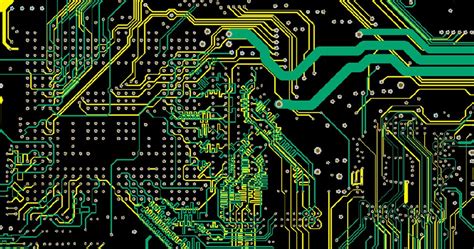
Conclusion
As we’ve explored throughout this analysis, PCB Design Ltd demonstrates a comprehensive approach to addressing modern circuit board challenges. Their methodologies balance technical precision with practical application, particularly in industries where reliability and efficiency are non-negotiable. By combining advanced PCB assembly workflows with intelligent PCBA integration protocols, the company ensures that designs meet signal integrity benchmarks while adhering to thermal dissipation requirements—critical for high-stakes sectors like aerospace and consumer electronics.
A key differentiator lies in their ability to harmonize cost-efficiency with performance. For instance, their adoption of adaptive routing algorithms and multi-layer stack-up optimization minimizes material waste without compromising on electrical performance. This strategy not only reduces PCB assembly costs but also accelerates time-to-market for clients—a critical advantage in fast-paced markets.
Looking ahead, the integration of AI-driven simulation tools and IoT-compatible PCBA architectures will likely redefine thermal management and signal optimization standards. PCB Design Ltd’s proactive investment in these areas positions them at the forefront of next-generation circuit board innovation, ensuring their solutions remain adaptable to evolving industry demands. The convergence of rigorous testing frameworks and sustainable material choices further solidifies their role as a trusted partner for both mission-critical and mass-production applications.
FAQs
How does PCB Design Ltd ensure signal integrity in high-frequency applications?
Our team employs advanced simulation tools to model transmission lines and mitigate electromagnetic interference. By optimizing trace geometry and dielectric materials during PCBA, we maintain impedance control within ±5% tolerance, critical for aerospace communication systems.
What thermal management techniques are used in multi-layer designs?
We integrate thermal vias and copper pours in PCB assembly to dissipate heat from power-hungry components. For consumer electronics, this approach reduces junction temperatures by 15–20°C while maintaining compact form factors.
Can cost-effective designs meet aerospace reliability standards?
Yes. Through rigorous design-for-manufacturing (DFM) checks and strategic material selection, we achieve MIL-PRF-31032 compliance in PCBA processes without over-engineering. This balances durability with a 30–40% cost reduction versus traditional methods.
How do material choices impact consumer electronics performance?
Selecting low-loss laminates like Isola FR408HR minimizes signal attenuation in high-speed circuits. For budget-conscious projects, we recommend halogen-free alternatives that meet UL 94V-0 flammability ratings during PCB assembly.
What emerging technologies shape future thermal control strategies?
We’re implementing embedded heat pipes and phase-change materials in PCBA layouts. These innovations enable 25% higher power density handling for next-gen IoT devices and electric vehicle control systems.
Explore Professional PCB Assembly Solutions
For tailored circuit board optimization strategies spanning aerospace to wearable tech, please click here to consult our PCB assembly specialists.

